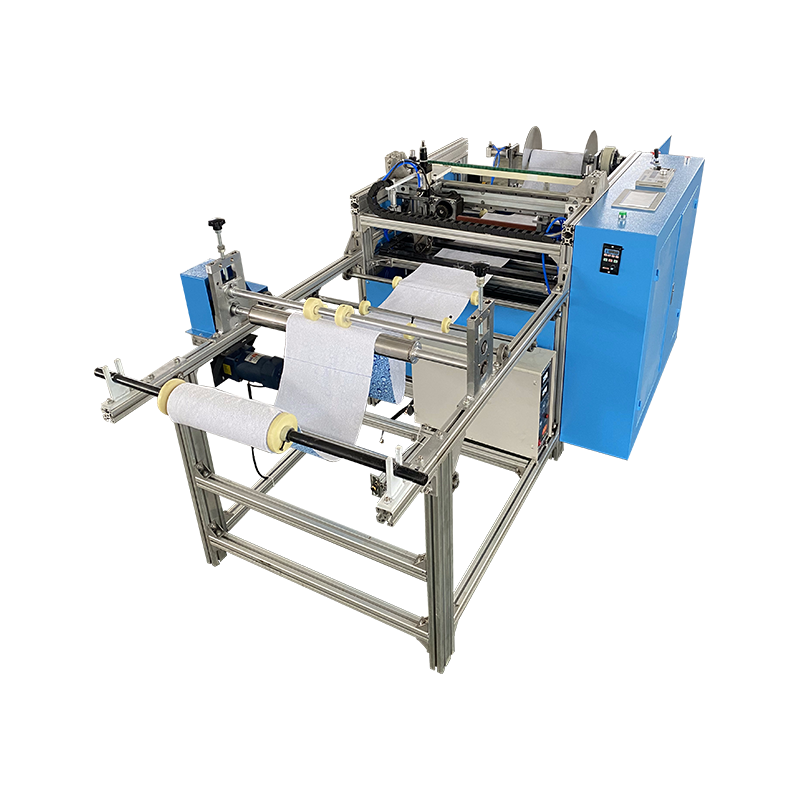Request A Quote

When comparing towel cutting machines to other fabric cutting technologies in the market, several factors such as performance, cost, efficiency, and application suitability come into play. Here’s a breakdown of these comparisons:
Performance
Precision:
Towel Cutting Machines: Generally offer good precision for cutting standard towel sizes and shapes, especially when equipped with automated features.
Laser Cutting Machines: Provide superior precision and can handle intricate designs, making them ideal for detailed applications beyond standard towels.
Rotary Cutters: Known for speed and efficiency, but may not match the precision of laser cutting for complex patterns.
Speed:Towel Cutting Machines: Designed for medium to high-speed production, especially in automated setups. They can quickly cut multiple layers.
Laser Cutting Machines: While precise, they can be slower for thicker materials due to the time required for the laser to penetrate.
Die Cutting Machines: Offer high-speed cutting for specific shapes but may require more setup time for die creation.
Material Versatility:
Towel Cutting Machines: Primarily designed for towel and similar fabric materials.
Universal Cutting Machines: More versatile and can cut various materials, including synthetic fabrics, leather, and foam, making them suitable for diverse applications.
Cost
Initial Investment:
Towel Cutting Machines: Generally lower in cost compared to laser cutting machines, making them accessible for small to medium-sized operations.
Laser Cutting Machines: Higher initial investment due to advanced technology and capabilities, but can offer long-term savings through reduced waste and higher precision.
Die Cutting Machines: Can vary in cost; initial die creation can be expensive, but they are cost-effective for high-volume production once set up.
Operating Costs:
Towel Cutting Machines: Typically have lower operating costs due to simpler technology and fewer energy requirements.
Laser Cutting Machines: Higher operating costs due to energy consumption and maintenance of laser systems, but they may save costs in material usage through precision cutting.
Rotary and Die Cutting Machines: Generally moderate operating costs, but die replacement can add to expenses in die cutting.

Efficiency
Material Utilization:
Towel Cutting Machines: Efficient in cutting standard towel sizes but may not optimize fabric use as effectively as advanced systems.
Laser Cutting Machines: High material utilization due to precision and the ability to nest pieces tightly together.
Rotary Cutters: Good for bulk cutting, but may leave more waste compared to lasers when cutting complex shapes.
Production Volume:
Towel Cutting Machines: Suitable for medium to high-volume production, especially in textile-focused operations.
Laser Cutting Machines: Can handle high volumes with high accuracy, making them suitable for both small and large-scale operations.
Die Cutting Machines: Highly efficient for high-volume production, especially for specific shapes, but may require downtime for die changes.
Application Suitability
Specialization:
Towel Cutting Machines: Specifically designed for towel production, making them ideal for manufacturers focused on that niche.
Laser Cutting Machines: Versatile for various textiles and applications, including custom designs and high-end fashion.
Rotary and Die Cutting Machines: Suitable for a wide range of textile applications, but may not be as efficient for specialized towel production.
Copyright © ChangZhou AoHeng Machinery Co., Ltd. All Rights Reserved

 English
English 中文简体
中文简体 русский
русский Español
Español